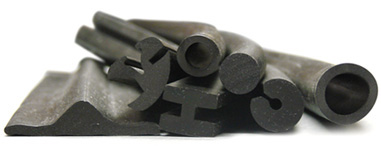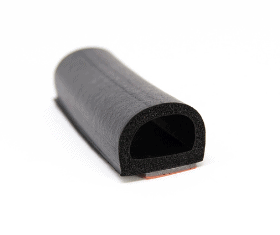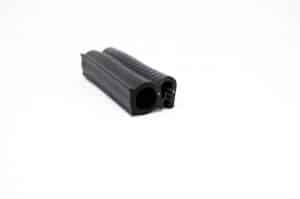Doug Sharpe
President of Elasto Proxy
Why is it important to ask for more than just a “neoprene or EPDM 60 duro seal” when ordering sealing products? If you don’t specify physical properties or consider ASTM standards, a supplier may deliver a seal that has the the wrong characteristics. All materials aren’t the same, and many different types of rubber compounds are available. So where can you find the expert advice you need to select the right rubber material?
Watch Elasto Proxy on YouTube
Elasto Proxy’s new YouTube video, Best Practices for Specifying Rubber Materials, provides answers to important questions about material selection. If you don’t know where to start, or even which questions to ask, then this instructional video is for you. “Best Practices for Specifying Rubber Materials” can also help if you’ve ordered rubber materials before, but want to be sure you’re asking all the right questions.
At just 2:39 minutes long, this new YouTube video is co-hosted by Megan Beaulieu, Elasto Proxy’s Executive Assistant, and me. “Best Practices for Specifying Rubber Materials” is the first of several instructional videos that Elasto Proxy will feature on our YouTube channel, so Megan and I start with the basics.
After describing some problems caused by ordering just a “neoprene or EPDM seal,” we outline the ASTM classification system and discuss how rubber compounds vary in terms of hardness and flexibility. If you need a neoprene or EPDM seal, then you need to know about the ASTM D2000 and ASTM D1056 standards.
Rubber Seals and ASTM Standards
ASTM International is an organization that provides standard ways to describe or call-out rubber materials based on physical properties. ASTM designations are based primarily on Type (heat resistance) and Class (oil resistance), but include additional values that describe a compound’s other characteristics.
ASTM D2000 describes the properties of vulcanized rubber materials such as natural and reclaimed rubber. Although this ASTM standard is entitled “Standard Classification System for Rubber Products in Automotive Applications,” other industries can and do use it for non-automotive applications.
ASTM D1056 covers flexible cellular rubber products known as sponge rubber and expanded rubber. As ASTM International’s “Standard Specification for Cellular Materials,” it defines cellular rubber by Type, Class, and Grade.
How Can We Help You?
Watching “Best Practices for Specifying Rubber Materials” is a great way to get started, but we appreciate that you may have questions of your own, too. By listening to all of your requirements and understanding all of our needs, Elasto Proxy can recommend the right sealing solution for your specific application. To learn how our solutions providers can help, contact us today.











